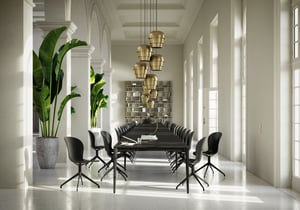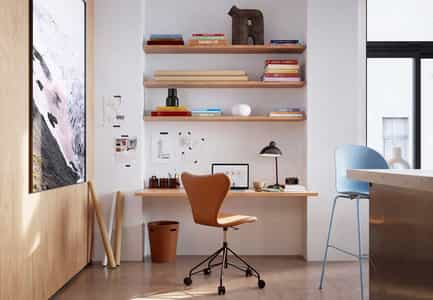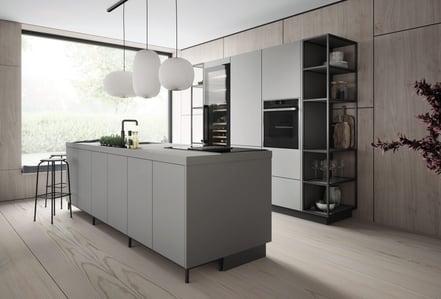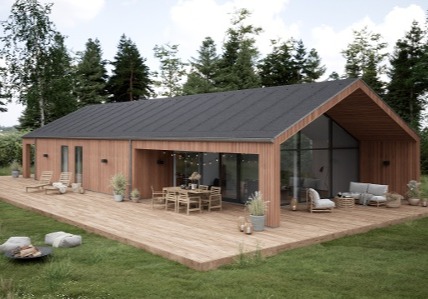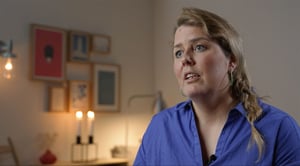Here's your quick introduction to 3D images
Since 1994, Cadesign form has been working with visuals created on a computer screen–images, animations, VR, AR, interactive solutions, you name it. The common thread for most of our work is CGI (Computer-Generated Imagery), which also encompasses 3D images.
Read about the difference between CGI and 3D in this blog post.
In this blog post, I'll focus on what a 3D image is. I won't go into too much depth because creating photorealistic 3D images is no simple task.
Get ready to read more about:
Before I jump into the explanations, let’s introduce the main character: the 3D image. Take this image as an example:

Although this image resembles a photograph, it's created in 3D using computer software. While the final result looks similar to a picture, the key difference is that photography captures images from the physical world, whereas 3D images originate from the digital realm. Creating digital images offers several advantages, which I'll discuss later.
If you typically associate 3D with animated movies or video games, this image might appear quite different from what you expect. However, it's based on the same fundamental principle. While many animated films aim for a more cartoonish appearance, we focus on photorealism, allowing our images to look like photographs. This lets us provide our clients with beautiful, lifelike representations of their products that they can use for marketing purposes, free from the limitations of the physical world. More on that later.
But how do you go from a 3D model to a photorealistic image? Well, this is where it gets tricky. We have a blog post dedicated to the different steps of making a 3D image. You can find it here.
What is a 3D image?
A 3D image is, in short, a digitally created representation that simulates a three-dimensional appearance. In our field of work, these images are often designed to closely resemble photographs, capturing intricate details such as lighting, texture, and depth. Utilizing advanced computer graphics techniques, 3D images can represent objects and scenes in a way that allows viewers to perceive them as if they exist in real space, enhancing the overall visual experience and realism.

A 3D image is constructed digitally, so every element has gone through a process like the one above. These four images show how a teapot goes from wireframe to final product. The wireframe can easily be recognized as having been constructed digitally. But when we look at the final image, we’re looking at a teapot that may as well be a photograph—I mean, look at the reflection and texture!
We can also use the above lifestyle image as an example:


What is the difference between a 3D and a traditional (2D) image?
A 3D image stands apart from a 2D image primarily because of its depth dimension. While 2D images are flat, showcasing only height and width, 3D images incorporate depth, resulting in a more vibrant and lifelike presence. This added dimension enhances realism and allows for varied perspectives, manipulation, and even animation, making the viewing experience more dynamic and engaging.
Another key difference lies in how they are created. A 2D image is typically captured using a camera or drawn digitally. In contrast, a 3D image is constructed using specialized 3D modeling software. This process involves sculpting, texturing, and rendering an object to achieve a realistic or stylized appearance. As a result, 3D images are commonly used in fields such as architecture, gaming, animation, and product visualization, while 2D images remain essential in photography, graphic design, and traditional art.

Why should you use 3D images?
We mainly work with 3D and CGI to create marketing and sales materials for our clients. When considering 3D from a marketing perspective, there are so many reasons to start using it, some of them being all the flexibility you want (we can construct anything you dream of) and the possibility of reusing images for different purposes (SoMe films, configurators, etc.), which leads me to the main reason:
Embracing 3D opens up cost-saving possibilities, especially for your marketing material creation! Once these images are generated, they can be easily reused across various channels, saving you the time and expense of reconstructing scenes. This streamlines your workflow and amplifies the return on your initial investment.
3D imagery enables you to effortlessly modify or refresh products within a scene, all without the hassle of additional photo shoots. This adaptability keeps you aligned with the latest trends and customer preferences while delivering top-notch visuals efficiently.
Overall, 3D imagery improves your creative capabilities and helps with budget management.
Who uses 3D images?
3D images are used for many different purposes in many different industries. Most of our clients work within these lines of business: Industrial, Building Materials, Furniture, Kitchen, Bathroom, and Retail.
Our sister company, Dimension Design, works with visualizing buildings under construction to make it easier for would-be buyers to imagine the final results.
Some companies benefit from the possibility to show their product anywhere, from any angle. Some benefit from the flexibility, some from the locations we can create with no limitations of the physical world (it rains a lot in Denmark!), and some benefit from the fantastic quality that makes the images look even better than the real world.

